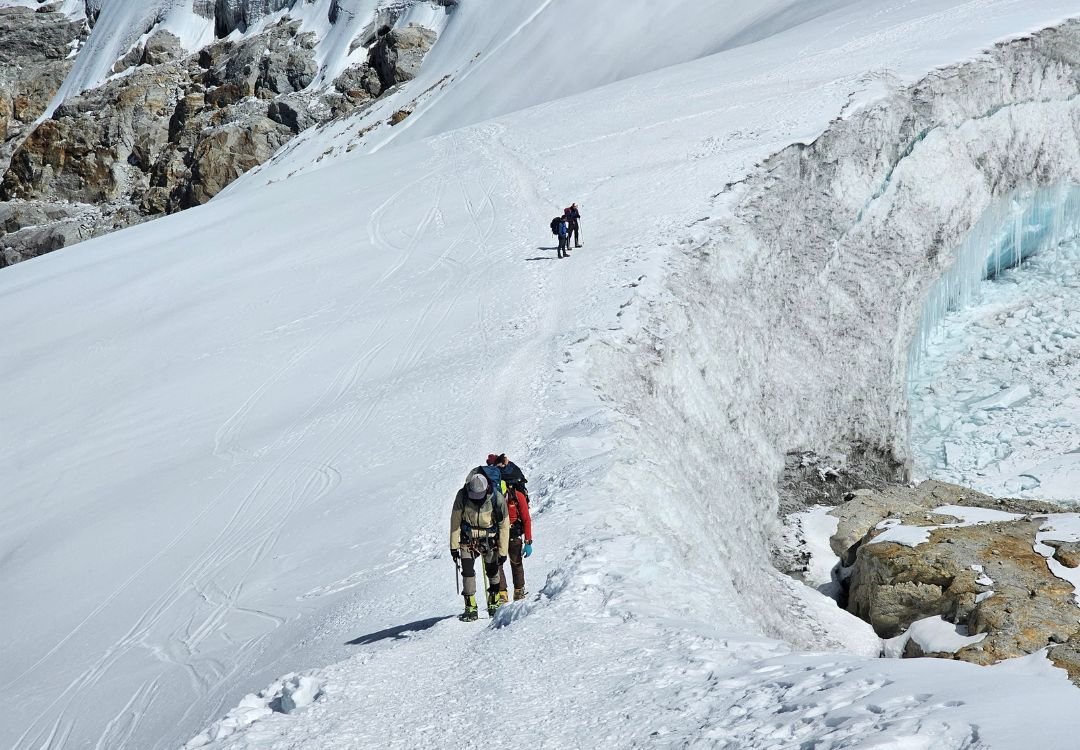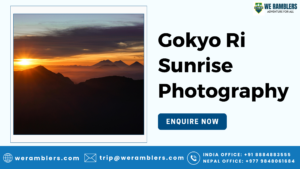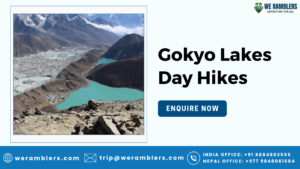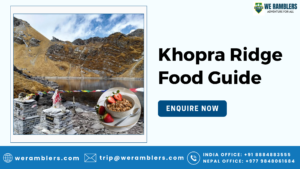Insurance for Mera Peak Climb: What Every 6000m+ Trekker Must Know
Mera Peak stands tall at 6,476 meters (21,247 ft), making it the highest permitted trekking peak in Nepal. Nestled in the remote Hinku Valley within the Mahalangur section of the Himalayas, the peak offers a rare combination of high-altitude adventure and relatively moderate technical demands. Its summit rewards climbers with an unmatched panoramic view of five of the world’s 8000-meter giants: Everest, Lhotse, Makalu, Cho Oyu, and Kanchenjunga.
The Mera Peak expedition generally spans 17 to 22 days, including acclimatization and rest days. Though it is classified as a trekking peak, Mera Peak is far more demanding than typical Himalayan treks, owing to the sheer altitude, rapidly changing weather conditions, and the glaciated summit approach. The climb requires gear like crampons, ropes, harness, and ice axe, especially during the final push to the summit.
Due to its 6000 meters plus elevation, Mera Peak demands not just physical readiness, but also careful logistical planning. That includes choosing the right insurance for Mera Peak Climb, a critical aspect often overlooked until it’s too late. Whether you are a first-time high-altitude trekker or a seasoned climber, understanding the risks associated with Mera Peak Climb and ensuring appropriate trekking insurance is essential for safety and peace of mind.
Why Do You Need Insurance for Mera Peak Climb?
The need for specialized insurance for Mera Peak Trek goes far beyond typical vacation travel coverage. Trekking over 6000 meters introduces elevated risks and logistical challenges that are not addressed in most standard insurance policies. While general travel insurance may cover trip cancellations, baggage loss, or medical emergencies within urban areas, it often fails to extend protection to remote, high-altitude environments like Mera Peak.
The terrain beyond Lukla is remote, the altitude is extreme, and infrastructure is sparse. Emergency services such as helicopter evacuations are the only feasible option for serious medical issues, and they come at a high cost. Without proper coverage, a climber may face financial hardship in the event of altitude sickness, injury, or evacuation.
Furthermore, most general policies exclude adventure activities like high-altitude trekking and mountaineering unless explicitly added. Choosing the best travel insurance for Mera Peak Climb ensures you are financially and logistically protected, no matter what challenges the Himalayas throw your way.
High Altitude Risks Above 6000m
Ascending beyond 6000 meters puts significant physiological strain on the human body. At such altitudes, oxygen levels are reduced by nearly half, which makes Acute Mountain Sickness (AMS) almost inevitable unless acclimatization is carefully managed. More severe complications include High Altitude Pulmonary Edema (HAPE) and High Altitude Cerebral Edema (HACE), both of which can become fatal if not treated immediately.
The remote nature of the Mera Peak route means there are no advanced medical facilities after Lukla. In the case of AMS or more serious conditions, the only way to ensure survival is through rapid descent or helicopter evacuation. This is where your Mera Peak Trek insurance becomes more than just a document; it becomes your lifeline.
Many trekkers underestimate the altitude risks, thinking that fitness alone can overcome altitude-related illnesses. However, altitude affects even the most experienced climbers. Your insurance should explicitly state coverage for trekking over 6000 meters and emergency evacuation from remote mountain zones. This clause is often hidden or requires add-ons, so clarity and verification are essential before purchasing any plan.
Accidents and Injuries During Mera Peak Climb
While Mera Peak is not a technical climb compared to peaks like Ama Dablam, it still presents considerable physical dangers, especially beyond Khare and the high camp. Trekkers must navigate steep moraines, ice fields, and glacial sections, all while enduring freezing temperatures and the effects of high altitude.
A slip on icy terrain, a twisted ankle on rocky trails, or a fall into a concealed crevasse can all result in serious injury. Due to the peak’s altitude and location, ground evacuation is impractical. Only aerial rescue via helicopter is feasible, which makes Mera Peak Trek insurance with airlift coverage absolutely necessary.
It’s also important to note that many insurance policies exclude injuries sustained during “mountaineering” activities, especially those involving the use of equipment like ropes and crampons. Since Mera Peak requires such gear, your policy must list these explicitly under covered adventure activities. Without this clause, your claim may be denied, even in the event of a legitimate emergency.
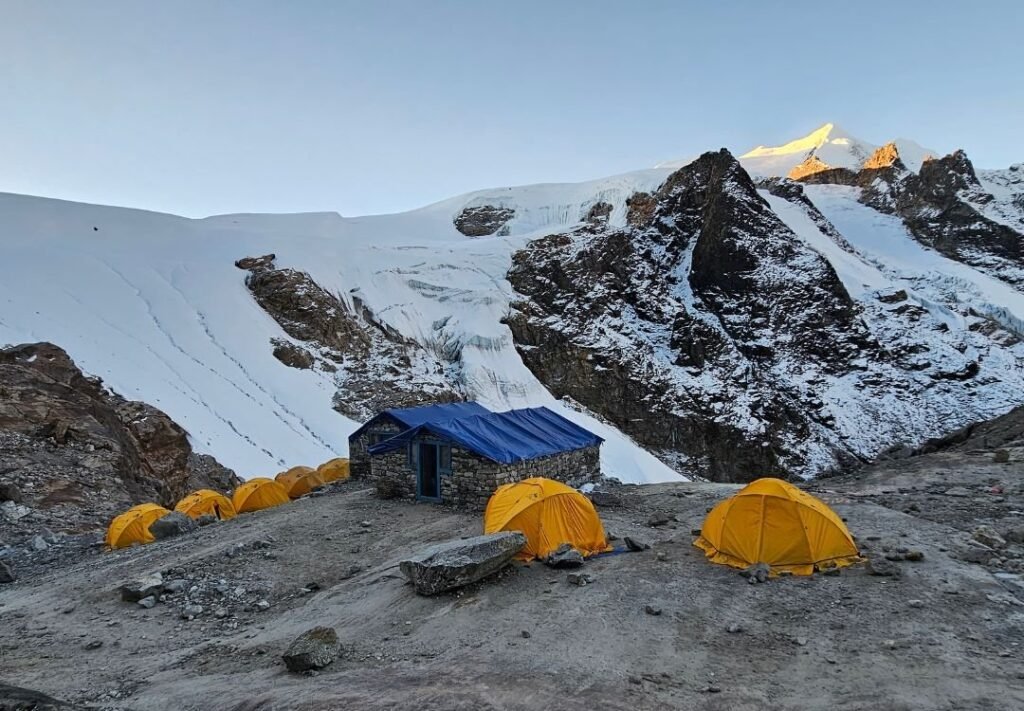
Illnesses During the Mera Peak Trek
Aside from altitude-related conditions, trekkers may also suffer from gastrointestinal infections, viral flu, food poisoning, and cold-related illnesses. Basic ailments like diarrhea, dehydration, or bronchitis can escalate quickly in the harsh conditions above 4000 meters, let alone at 6000 meters plus.
The lack of access to professional healthcare makes self-treatment and evacuation the only options in many scenarios. At high camps and in the Hinku Valley, even basic medicines are scarce, and there are no clinics or rescue teams on standby. A comprehensive Mera Peak Trek insurance policy should include coverage for hospitalization, medication, and emergency transport, even if symptoms initially seem minor.
Furthermore, if your trek is interrupted due to illness, your insurance should offer trip interruption compensation, allowing you to recover some of your financial investment. In these environments, even the healthiest trekkers can face setbacks, and having the right insurance offers critical reassurance.
Other Reasons for Having Mera Peak Climb Insurance: Flight Disruptions and Baggage Loss
Getting to and from Mera Peak often involves flying through Lukla Airport, known for its short runway and weather-related delays. Flights to Lukla can be canceled for several days, leaving trekkers stranded in either Kathmandu or the Khumbu region. These delays can not only impact your itinerary but also add unexpected costs.
A proper travel insurance for Mera Peak Climb should cover trip delays, cancellations, and alternative transport arrangements. In the case of long delays, some policies may even offer compensation for meals and lodging.
Baggage loss is another major concern, particularly when it comes to specialized trekking gear. If your checked luggage containing mountaineering boots, down suits, or crampons is delayed or lost, you may be forced to rent or buy replacements at inflated prices in Kathmandu, or abort the trek altogether. Ensure your insurance includes equipment coverage, particularly for sporting or expedition gear.
What Your Mera Peak Trekking Insurance Must Cover
When trekking to elevations above 6000 meters, generic coverage won’t protect you. Your policy must be suited for high-altitude expeditions. At minimum, look for the following inclusions:
- Medical Evacuation via helicopter from any altitude or region
- Altitude coverage above 6000 meters, ideally up to 7000m for buffer
- Emergency hospitalization, doctor consultation, and medication
- Trip cancellation, delay, or interruption protection
- Lost, stolen, or delayed baggage and gear
- Adventure activity clause explicitly listing mountaineering and ice travel
- Search and rescue costs (not always covered by standard evacuation)
- Optional but recommended: COVID-19, epidemic coverage, and quarantine compensation
Your Mera Peak Trek insurance should also offer 24/7 emergency assistance and have a reliable claims process, especially for international policyholders.
Recommended Insurance Providers for Mera Peak Climb
Here are trusted providers known to offer comprehensive coverage for high-altitude expeditions like Mera Peak:
- World Nomads – Ideal for international trekkers with optional add-ons for mountaineering above 6000m.
- Global Rescue – Renowned for rapid search and rescue coordination; often recommended for remote treks.
- IMG Global – Flexible policies tailored for trekking and adventure activities over 6000 meters.
- Alpenverein (Austrian Alpine Club) – Popular among European climbers for their affordable coverage and clear altitude clauses.
- Seven Corners, Travel Guard, Adventure Care, and ASC360 – All provide plans suited for mountaineers, especially those tackling 6000m+ expeditions.
Before finalizing a provider, always verify the altitude limit, evacuation terms, and exclusions related to technical equipment or guided expeditions.
Typical Insurance Cost for Mera Peak Trek
While prices vary based on nationality, age, coverage days, and activity level, the biggest factor influencing insurance cost is the altitude and adventure clause. Trekkers venturing above 6000 meters often need to pay additional premiums, and policies typically request detailed itineraries or confirmation of guide participation for eligibility.
Keep in mind that costs increase with longer durations, higher coverage limits, and risk categories. Though exact amounts differ by country, a comprehensive policy for Mera Peak is an investment that can save you from significant financial and medical hardship in the mountains.
Tips for Choosing the Right Mera Peak Insurance
- Altitude Limit Confirmation – Ensure coverage explicitly includes climbs above 6000 meters.
- Emergency Evacuation Clause – Look for helicopter and search & rescue inclusion, not just ground transport.
- Check for Mountaineering Inclusion – Your trek involves crampons, ice axes, and glacier walking, so ensure it’s listed.
- Declare Health Issues Honestly – Non-disclosure of pre-existing conditions can void your claim.
- Policy Start Date – Coverage should begin before you leave your home country.
- Carry Multiple Copies – Share your policy with guides and keep both digital and printed versions for quick access.
Why Choose We Ramblers for Your Mera Peak Adventure
At We Ramblers, we understand the seriousness of trekking to 6000 meters and beyond. Our team of experienced Sherpa guides, expert route planners, and medical support specialists ensure every climber is fully prepared, both physically and logistically. We help clients navigate insurance documentation, rescue planning, and pre-departure checklists. With certified guides, 24/7 emergency coordination, and years of Himalayan expedition experience, We Ramblers is the name climbers trust for safe, guided ascents of Mera Peak and other high-altitude Himalayan routes. Contact us today to get proper guidance regarding the travel insurance for Mera Peak Climb.

